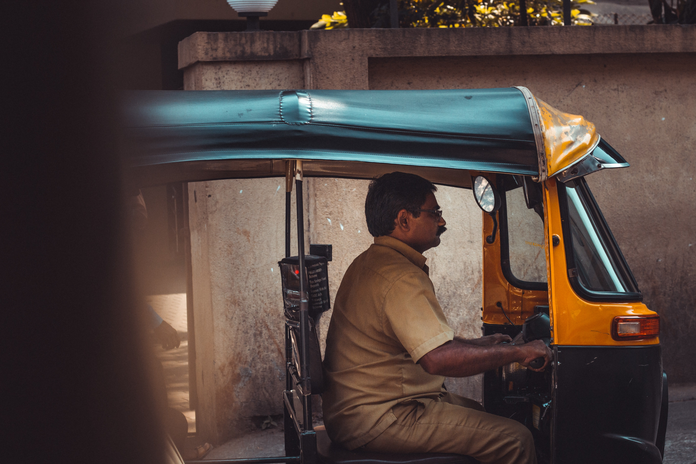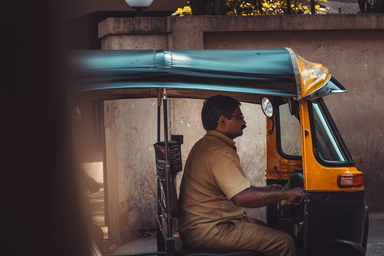In a country like India, we have various modes of transportation, from the humble manually pulled auto-rickshaws to high-speed metros. No matter how advanced the system of transportation, auto-rickshaws mark the city, ferrying passengers of all classes and backgrounds.
Few states in our country can go toe to toe with Karnataka in terms of the diversity that they offer. From the high tech hub of Bangalore, lavish temples in Mysore, World Heritage Sites in Hampi to the cozy university towns like Manipal. As disjointed as they seem, they wouldn’t be as renowned if not for the state’s brilliant transport infrastructure. While cities like Bangalore have the privilege of metros and other ride sharing services to get around, many still depend on good old auto-rickshaws for their daily commutes. In smaller towns and cities, they form the backbone of the local transportation system; countless individuals depend on it on a daily basis.
Working towards the idea of a “world-class city,” – Delhi is an important cultural, historical and commercial hub and is home to a multitude of high rises, metros, shopping malls, a well-established gig economy, education and health services. And if that weren’t enough, it is also the seat of India’s central government. Old Delhi’s charm does not go unnoticed either, it captures our interest and offers a rich historical narrative. No matter how starkly distinct Old and New Delhi may seem, there is one thing that is common to both and connects people to the two worlds, the auto-rickshaw. While much study has been done about the general transportation system of the city, it is important to engage with numerous aspects of these vehicles and their drivers for a deeper insight into a crucial transportation aspect of our society.
Cultural Aspects
A majority of people do not cherish the thought of travelling by an auto-rickshaw in Delhi. Approaching a rickshaw for a ride is a harrowing experience. Auto drivers crowd around a potential passenger, suggest rides to renowned areas and often vye to be the one ferrying the passenger. Bargaining is a common activity due to the driver’s refusal to use meters. Further, most people give in to the high prices during a lack of other transport services.
The auto-rickshaw system is booming in Karnataka, growing and developing as a result of demand. This means a few things. It’s difficult to regulate and enforce such a massive service and to the people. Each customer will have a different experience, and there is no system of accountability in case of mistreatment or overcharging. People are bound to encounter different events with each trip and this brings into question the reliability of this service. There’s no shortage of cases of surge charging and cancellation of rides on accounts of not meeting the demands of the ‘auto-wallas’.
Nonetheless, what explains the life of an auto-rickshaw in these cities? The socio-political and economic system chalks out the path for auto drivers to tread on. In most cases, these paths are strewn with difficulties that eventually lead the drivers to commit actions that are considered objectionable such as overcharging, arguing with passengers and unwillingness to follow the meter (a desperate bid to make profits). Their side is also far from being free of mistreatment by arrogant passengers and a system that threatens their survival and livelihood.
The Economic Basics of an Auto-rickshaw
A study conducted by Harding and Hussain in 2018 among the auto-rickshaw driver population, reveals that the drivers are a “group of underprivileged men trying to earn a livelihood in the city.” When agricultural activities and other methods of earning wane away in their villages, men and women arrive in Delhi and Karnataka through contacts, to earn a living and support their families. These contacts get them in touch with the auto contractors, who rent them out. This gets them a foothold in the profession and they learn the ropes of the business on the job itself. Becoming an auto driver is also a means for the migrants to move up the hierarchy of economic and social betterment. Many casual labourers and cycle-rickshaw pullers “graduate” into the profession of auto driving. It is also common for drivers who take up driving as an employment safety net when their previous jobs or independent ventures did not head in the right direction. Many drivers are able to send monthly remittances of around INR 2500–5000 to their families as well as contribute larger amounts during emergencies or special occasions. However, while this profession has its benefits, especially in terms of economic safety- temporarily or permanently- it does have economic difficulties that pervade the lives of the drivers.
In Bangalore and Delhi, going from wanting to earn from a rickshaw to actually earning is a time-consuming process to say the least, if done formally that is. To put it into perspective, it requires a driver’s licence and then a year of experience to apply for an auto-rickshaw badge which takes another three months. Then it takes additional time to obtain a permit for an auto and apply for a loan which has no guarantee of being approved because of banks’ wariness of giving auto drivers loans based on past experiences of defaulting. This further adds to their financial woes. All in all, auto drivers engage in difficult economic battles, all while they earn just enough to get by, bleed money, with no assurance of even being able to finance a vehicle at the end of it all.
Autos in the Time of Ola and Uber
Delhi has seen major technological and developmental changes in the last decade. The transportation sector is no exception. From the rapid expansion of Delhi Metro to the introduction of app-based taxi services, Delhites have experienced it all. Manipal on the other hand, is maybe a few years away from introducing Ola/Uber seeing how Swiggy has been a fairly recent addition which otherwise was a service that did not exist in the town. Bangalore being a metropolitan has no shortage of privileges, the online taxi services being a few of them.
What exactly has been the impact of smartphone-based taxi services like Ola and Uber on the traditional three-wheeled auto-rickshaws? In a research conducted in Delhi by Aligarh Muslim University, it has been found that the cost of travelling an average of 10km by Uber Pool is more reasonable than an auto-rickshaw. It is economical, especially considering the air conditioning, less noise and better seating. The auto rickshaws adhering to the meter is a completely foreign concept, they charge as per their will often, if not always, more than the standard set by the government. Hailing a cab thus saves the passengers in both cities, from the arduous task of bargaining with the auto drivers about the rates and this adds to the comfort of travelling by cab.
In Karnataka and Delhi, there has been an outrage against the service amongst traditional taxi and auto-rickshaw unions. Why wouldn’t there be? After all, cabs are a reliable service that provide the same amenities for less than half the cost of traditional three-wheeler cabs and this is a game-changer in the very least. All that with the added benefits of in-ride wifi, online payment and numerous safety features renders the good old auto-wallas obsolete.
Considering the benefits of upgrading to the world of Ola and Uber, one would think that the auto-wallas would like to work towards this upscaling. However, most auto-rickshaw drivers find it a far fetched reality. Firstly, the vehicle they have is on EMI or monthly installments and only on clearing this debt can they venture to buy another vehicle. This paying off would take years. Secondly, they say dissatisfaction, unfair rates and strikes are issues that plague cab drivers as well and they do not see an upgrade in that respect. Another crucial reason for sticking with the auto is that many auto-wallas either do not have smartphones or are unfamiliar with operating them. Moreover, the app-based auto rides are more in demand because of hassle-free services due to the absence of bargaining and pre-decided pricing. These rides are more expensive for customers because of commissions paid by the auto drivers to the companies. Nonetheless, it saves many customers from the effort of having to hail an independent auto and bargain with them about prices. Another benefit is the recourse to a higher authority in case of violation of certain customer services which is not an option in case of independent auto wallas. While auto rickshaws continue to be an important niche in the market, their presence as a mode of transportation is threatened by the proliferation of app-based cabs.
They say money isn’t everything but when one doesn’t have the means to survive, it’s quite the contrary. No one feels the brunt of this like the auto-wallas who are often victims of their own profession. The economic, socio-political and cultural systems are factors that determine the behaviour of the players functioning within it. Even though circumstances may prove difficult and their image being no better in the public eye, auto-wallas are here to stay on in our lives. Delhi and Karnataka will continue to be marked with the three-wheeled vehicles – constituting an important aspect of Indian life and culture.



